-
Membership
Membership
Anyone with an interest in the history of the built environment is welcome to join the Society of Architectural Historians -
Conferences
Conferences
SAH Annual International Conferences bring members together for scholarly exchange and networking -
Publications
Publications
Through print and digital publications, SAH documents the history of the built environment and disseminates scholarship -
Programs
Programs
SAH promotes meaningful engagement with the history of the built environment through its programsMember Programs
-
Jobs & Opportunities
Jobs & Opportunities
SAH provides resources, fellowships, and grants to help further your career and professional life -
Support
Support
We invite you to support the educational mission of SAH by making a gift, becoming a member, or volunteering -
About
About
SAH promotes the study, interpretation, and conservation of the built environment worldwide for the benefit of all
Society of Architectural Historians Names the 2022 Class of Fellows
Jan 26, 2022
by
SAH News
The Society of Architectural Historians today announced the 2022 class of SAH Fellows, one of the Society’s highest honors. SAH Fellows are individuals who have distinguished themselves by a lifetime of significant contributions to the field, which may include scholarship, service to the Society, teaching, and stewardship of the built environment. SAH will honor the Fellows at the SAH 2022 Annual International Conference awards ceremony in Pittsburgh on Thursday, April 28.
The 2022 SAH Fellows are listed below.
Gail Dubrow, FSAH
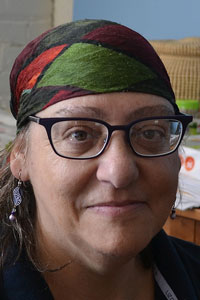 Gail Dubrow is Professor of Architecture, Landscape Architecture, Public Affairs & Planning, and History at University of Minnesota (UMN). She taught at University of Washington (Seattle) for 16 years before being recruited to serve as UMN’s Vice Provost and Dean of the Graduate School (2005–2009). She currently teaches in the Heritage Studies and Public History Program. In 2020 Dubrow was designated a Distinguished Professor by the Association of Collegiate Schools of Architecture.
Gail Dubrow is Professor of Architecture, Landscape Architecture, Public Affairs & Planning, and History at University of Minnesota (UMN). She taught at University of Washington (Seattle) for 16 years before being recruited to serve as UMN’s Vice Provost and Dean of the Graduate School (2005–2009). She currently teaches in the Heritage Studies and Public History Program. In 2020 Dubrow was designated a Distinguished Professor by the Association of Collegiate Schools of Architecture.
Dubrow is a social historian of the built environment and cultural landscape in the US and is active in preserving places significant to the history of women, ethnic communities of color, LGBTQ, and other underrepresented groups. Her work has received support from the American Institute of Architects/American Architectural Foundation, National Endowment for the Humanities, National Park Service, Woodrow Wilson Foundation, and National Trust for Historic Preservation.
She is the author of many chapters and articles and two award-winning books, Sento at Sixth and Main, with Donna Graves, and Restoring Women's History Through Historic Preservation, edited with Jennifer Goodman, which won the 2004 Antoinette Forrester Downing Award for best book in historic preservation from the Society of Architectural Historians.
She is currently documenting the lives and careers of the earliest architects of Japanese ancestry to practice in the US. This project has been supported by fellowships from the American Council of Learned Societies, the Huntington Library, and the Smithsonian Institution. Dubrow is a co-founder and current co-chair of the SAH Asian American and Diasporic Architectural History Affiliate Group and collaborates with a team assisting the Cooper Hewitt, Smithsonian Design Museum to identify and accelerate the acquisition of work by American architects and designers of Asian ancestry.
Most recently, Dubrow founded REPAIR: Disability Heritage Collective, with Laura Leppink and Sarah Pawlicki, which is dedicated to revealing ableist assumptions and accelerating disability justice in historic preservation.
Dr. Dubrow has been a member of SAH since 2017. She was a board member from 2018 to 2021, and she currently serves on the Antoinette Forrester Downing Book Award Committee and the SAH Strategic Planning Committee.
Dianne Harris, FSAH
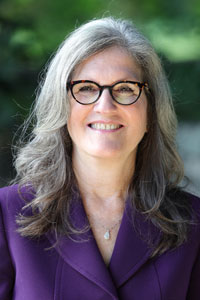 Dianne Harris is Dean of the College of Arts and Sciences and Professor of History at the University of Washington. From 2017 to 2021 she served as a Senior Program Officer in the Higher Learning program at The Andrew W. Mellon Foundation. Just prior to the 2016 presidential election, she was nominated by President Barack Obama to serve on the National Council on the Humanities, and although her nomination was suspended due to the results of that election, she has been a tireless supporter of the humanities throughout her career. From 2015 to 2017, she served as Dean of the College of Humanities and as Professor of History at the University of Utah. From 2008 to 2015, she served as Director of the Illinois Program for Research in the Humanities (now renamed as the Humanities Research Institute) at the University of Illinois at Urbana-Champaign.
Dianne Harris is Dean of the College of Arts and Sciences and Professor of History at the University of Washington. From 2017 to 2021 she served as a Senior Program Officer in the Higher Learning program at The Andrew W. Mellon Foundation. Just prior to the 2016 presidential election, she was nominated by President Barack Obama to serve on the National Council on the Humanities, and although her nomination was suspended due to the results of that election, she has been a tireless supporter of the humanities throughout her career. From 2015 to 2017, she served as Dean of the College of Humanities and as Professor of History at the University of Utah. From 2008 to 2015, she served as Director of the Illinois Program for Research in the Humanities (now renamed as the Humanities Research Institute) at the University of Illinois at Urbana-Champaign.
Dr. Harris holds a PhD in architectural history from the University of California, Berkeley. Her scholarship, which has a broad temporal and geographic reach spanning from 18th-century Lombardy to the postwar United States, is united by a sustained focus on the relationship between the built environment and the construction of racial and class identities. In addition to her numerous scholarly articles and essays, her award-winning publications include the co-edited volumes Villas and Gardens in Early Modern Italy and France (2001) and Sites Unseen: Landscape and Vision (2007). She is editor of Second Suburb: Levittown, Pennsylvania (2010), and she is the author of The Nature of Authority: Villa Culture, Landscape, and Representation in Eighteenth-Century Lombardy (2003) and Little White Houses: How the Postwar Home Constructed Race in America (2013, second printing 2021).
Dr. Harris is editor for the University of Pittsburgh Press’s “Culture, Politics, and the Built Environment” series, and she currently serves on the board of the National Humanities Alliance and the board of Senior Fellows for Garden and Landscape Studies at Dumbarton Oaks.
Dr. Harris is a past president of the Society of Architectural Historians (2010–2012) and currently serves on the SAH Digital Advisory Committee. Harris was instrumental in shaping the development on SAHARA, SAH's online image archive for teaching and research. She joined SAH in 1989 and is a Life Member.
Ken Tadashi Oshima, FSAH
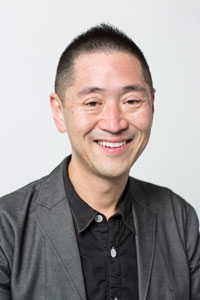 Ken Tadashi Oshima is Professor in the Department of Architecture at the University of Washington, Seattle, where he teaches trans-national architectural history, theory and design. He has also been a visiting professor at the Harvard Graduate School of Design and UCLA, and has taught at Columbia University and the University of British Columbia. He earned an AB degree, magna cum laude, in East Asian studies and visual and environmental studies from Harvard College, an MArch degree from University of California, Berkeley, and a PhD in architectural history and theory from Columbia University. From 2003 to 2005, he was a Robert and Lisa Sainsbury Fellow at the Sainsbury Institute for the Study of Japanese Arts and Cultures in London.
Ken Tadashi Oshima is Professor in the Department of Architecture at the University of Washington, Seattle, where he teaches trans-national architectural history, theory and design. He has also been a visiting professor at the Harvard Graduate School of Design and UCLA, and has taught at Columbia University and the University of British Columbia. He earned an AB degree, magna cum laude, in East Asian studies and visual and environmental studies from Harvard College, an MArch degree from University of California, Berkeley, and a PhD in architectural history and theory from Columbia University. From 2003 to 2005, he was a Robert and Lisa Sainsbury Fellow at the Sainsbury Institute for the Study of Japanese Arts and Cultures in London.
Dr. Oshima’s publications include Kiyonori Kikutake: Between Land and Sea (Lars Müller/Harvard GSD, 2015), Architecturalized Asia (U. Hawai’i Press/Hong Kong U. Press, 2013), GLOBAL ENDS: towards the beginning (Toto, 2012), International Architecture in Interwar Japan: Constructing Kokusai Kenchiku (U. Washington Press, 2009) and Arata Isozaki (Phaidon, 2009).
He curated GLOBAL ENDS: towards the beginning (Gallery MA, 2011), Tectonic Visions Between Land and Sea: Works of Kiyonori Kikutake (Harvard GSD, 2012), SANAA: Beyond Borders (Henry Art Gallery 2007–2008) and was a co-curator of Frank Lloyd Wright at 150: Unpacking the Archive (Museum of Modern Art, NY, 2017) and Crafting a Modern World: The Architecture and Design of Antonin and Noemi Raymond (UPenn, UCSB, Kamakura Museum of Modern Art, 2006–2007).
He was an editor and contributor to Architecture + Urbanism for more than 10 years, co-authoring the two-volume special issue, “Visions of the Real: Modern Houses in the 20th Century” (2000). His articles on the international context of architecture and urbanism in Japan have been published in journals including Architectural Review, Architectural Theory Review, Journal of the Society of Architectural Historians, Kenchiku Bunka, Japan Architect, L’Architecture d’Aujourd’hui, and the AA Files.
Dr. Oshima was president of the Society of Architectural Historians from 2016 to 2018 following service on the SAH Board of Directors and Executive Committee from 2008 to 2016. He joined SAH in 2000 and is a Life Member.
Arijit Sen, FSAH
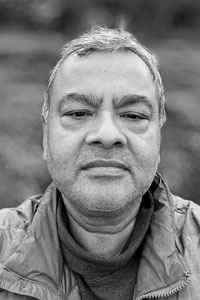 Arijit Sen is an architect and vernacular architecture historian who writes, teaches, and studies urban cultural landscapes, immigrant histories, and community-engaged historic preservation at the University of Wisconsin Milwaukee (UWM). He holds a PhD from the University of California, Berkeley. Sen’s writings examine South Asian immigrant cultural landscapes, urban public histories, and fieldwork methods.
Arijit Sen is an architect and vernacular architecture historian who writes, teaches, and studies urban cultural landscapes, immigrant histories, and community-engaged historic preservation at the University of Wisconsin Milwaukee (UWM). He holds a PhD from the University of California, Berkeley. Sen’s writings examine South Asian immigrant cultural landscapes, urban public histories, and fieldwork methods.
Sen explores field-based methods to interpret cities from the bottom-up, by engaging voices and histories of urban communities traditionally ignored in official narratives. Since 2012, he has directed the Buildings-Landscapes-Cultures Field School in Milwaukee, where university and community partners explore ways to interpret the city by engaging in storytelling, ecological conservation, heritage preservation, and civic engagement. This project received an American Association for State and Local History Award of Merit and was recognized by the National Humanities Alliance as a model engaged-humanities project. Sen is currently partnering with the Newark-based Humanities Action Lab to contribute to Climates of Injustice, a national traveling exhibit on environmental justice. In addition, he has experimented with public humanities field schools in Chicago, Calgary, Merrill (WI), and New Orleans, and in 2020, he received a Fulbright-Nehru Academic Excellence and Professional Excellence Award to take his methods to Kerala, India. He currently serves as co-director of Wisconsin Humanities’ “Community Powered” initiative, a state-wide public humanities project that encourages librarians, local community partners, and citizens to engage in locally meaningful projects around people, place, and histories.
Sen’s commitment to diversity expands into his teaching where he has served as mentor for programs such as Wisconsin Louis Stokes Alliance for Minority Participation (WiscAMP) and National Organization of Minority Architects Students (NOMAS). He received the University of Wisconsin’s Regents Diversity Award (2020), UWM Undergraduate Research Mentor of the Year Award (2016), and the UWM Distinguished Undergraduate Teaching Award (2016).
He has served on the board of directors of the Vernacular Architecture Forum, and as fellow at humanities centers such as the Dumbarton Oaks Research Library, the Center for 21st Century Studies, the Center for Advanced Study (UMN), and the Aga Khan Awards for Architecture’s Knowledge Construction Workshop.
Dr. Sen has been a member of the Society of Architectural Historians since 2016 and served on the board of directors from 2016 to 2019.
Abigail Van Slyck, FSAH
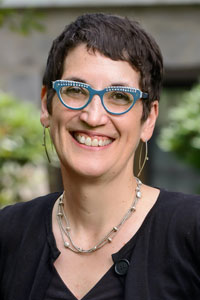 Architectural historian Abigail A. Van Slyck analyzes the role of architecture in shaping social relations, using typological studies to explore gender and age. Her 1995 book, Free to All: Carnegie Libraries and American Culture, 1890–1920, investigated the workspaces of female librarians and considered children’s reading rooms as tools of Progressive-era child-saving. Eleven years later, Van Slyck’s book, A Manufactured Wilderness: Summer Camps and the Making of American Youth, 1890–1960 probed how gender, class, and race impacted settings created to remove boys and girls from their mother-centered homes; it won the 2009 Alice Davis Hitchcock Award from the Society of Architectural Historians as well as the Abbott Lowell Cummings Award from the Vernacular Architecture Forum (VAF). Now she is writing a book on architect-designed playhouses, with the support of a Fulbright Scholar Award to the United Kingdom in 2019. As the co-editor of the Architecture, Landscape and American Culture series at the University of Minnesota Press, she has guided to publication a number of award-winning books by others.
Architectural historian Abigail A. Van Slyck analyzes the role of architecture in shaping social relations, using typological studies to explore gender and age. Her 1995 book, Free to All: Carnegie Libraries and American Culture, 1890–1920, investigated the workspaces of female librarians and considered children’s reading rooms as tools of Progressive-era child-saving. Eleven years later, Van Slyck’s book, A Manufactured Wilderness: Summer Camps and the Making of American Youth, 1890–1960 probed how gender, class, and race impacted settings created to remove boys and girls from their mother-centered homes; it won the 2009 Alice Davis Hitchcock Award from the Society of Architectural Historians as well as the Abbott Lowell Cummings Award from the Vernacular Architecture Forum (VAF). Now she is writing a book on architect-designed playhouses, with the support of a Fulbright Scholar Award to the United Kingdom in 2019. As the co-editor of the Architecture, Landscape and American Culture series at the University of Minnesota Press, she has guided to publication a number of award-winning books by others.
Dr. Van Slyck is the Dayton Professor Emerita of Art History at Connecticut College. After a decade on the faculty at the University of Arizona, she moved to Connecticut College in 1999 to direct the Architectural Studies program, eventually serving as the College’s chief academic officer.
In addition to her service as president of both VAF and SAH (2012–2014), Van Slyck’s work with SAH also includes two terms on the board, a stint as book review editor for Journal of the Society of Architectural Historians, and six years on the SAH Executive Committee (2008–2012). As SAH President, she contributed to the development of SAHARA, SAH's online image archive for teaching and research, and launched a fundraising effort to hire a full-time development director for the Society. More recently, she chaired the SAH Data Project Advisory Committee and was a co-founder of the SAH Architectural Studies Affiliate Group, which she currently co-chairs. She first joined SAH in 1986 and is a Life Member.


